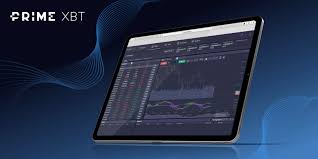
How to Trade Crude Oil: Comprehensive Guide for Investors
Crude oil is one of the most actively traded commodities in the world. Its dynamic market can offer great opportunities for investors looking to profit from price fluctuations. However, navigating the crude oil market requires a solid understanding of various factors that influence oil prices. In this guide, we will explore critical aspects of trading crude oil, including market fundamentals, trading strategies, and risk management practices. For detailed insights about trading platforms across various regions, check out how to trade crude oil at primexbt PrimeXBT countries.
Understanding Crude Oil Basics
Before diving into trading, it’s crucial to grasp the fundamentals of crude oil. Crude oil is a natural, unrefined petroleum product composed of hydrocarbon deposits and other organic materials. It is commonly categorized into different types, including:
- Brent Crude: Extracted from the North Sea and a global benchmark
- West Texas Intermediate (WTI): American benchmark, known for its high quality
- Dubai Crude: A benchmark for Middle Eastern oil
The Factors Influencing Crude Oil Prices
Several factors impact crude oil prices, including supply and demand dynamics, geopolitical events, and economic indicators. Understanding these can enhance your trading skills:
1. Supply and Demand
The basic economic principle of supply and demand heavily influences the price of crude oil. An increase in supply or a decrease in demand usually leads to lower prices, while decreased supply or increased demand raises prices.
2. Geopolitical Events
Oil prices are sensitive to political events, particularly in oil-producing regions. Conflicts, trade wars, and OPEC decisions can create volatility, providing opportunities for traders.
3. Economic Indicators
Indicators such as the unemployment rate, GDP growth, and manufacturing output can signal changes in oil demand. Economic growth typically increases demand for energy.
Choosing Your Trading Strategy
When trading crude oil, it’s essential to choose a strategy that aligns with your financial goals and risk tolerance. Here are some popular trading strategies:
1. Day Trading
Day trading involves buying and selling crude oil futures within the same trading day. This strategy requires a keen eye on market movements and quick decision-making skills.
2. Swing Trading
Swing trading seeks to profit from price swings in the market over several days or weeks. Traders look for patterns and trends to make informed entry and exit points.

3. Position Trading
This long-term strategy involves holding positions for weeks, months, or even years. It requires a solid understanding of market fundamentals and a strong belief in the market direction.
Using Technical and Fundamental Analysis
To maximize your crude oil trading success, it’s crucial to employ both technical and fundamental analysis:
1. Fundamental Analysis
This involves evaluating economic data, industry news, and geopolitical events that affect oil prices. Monitoring OPEC meetings, inventory reports, and economic indicators will provide insights into potential price movements.
2. Technical Analysis
Technical analysis relies on historical price data and chart patterns to forecast future price movements. Tools such as moving averages, Relative Strength Index (RSI), and Bollinger Bands can assist in identifying trading opportunities.
Risk Management: Protecting Your Capital
Trading crude oil can be risky, making effective risk management essential. Here are several strategies:
1. Set Stop-Loss Orders
Stop-loss orders automatically close your position when the price reaches a certain level, preventing excessive losses.
2. Use Proper Position Sizing
Determine how much of your capital you are willing to risk on a trade and adjust your position size accordingly.
3. Diversify Your Portfolio
Do not concentrate all your investments in crude oil. A mixed portfolio can minimize risk and provide more stable returns.
Choosing a Trading Platform
Being well-informed about the platforms available for trading crude oil is paramount. Look for platforms that offer the following:
- Reliable trading tools and resources
- Competitive spreads and commissions
- Strong customer support
Conclusion
Trading crude oil presents unique opportunities and challenges. By understanding the market’s fundamentals, utilizing effective trading strategies, employing sound risk management techniques, and choosing the right trading platform, you can navigate this complex market with confidence. Always remember to stay informed about global events that may affect crude oil prices, and continuously hone your trading skills to increase your chances of success.

